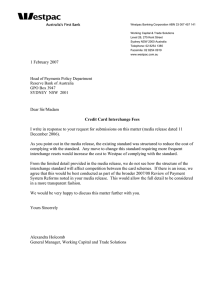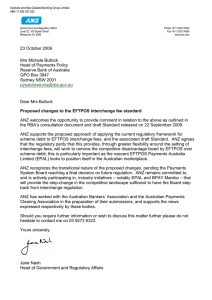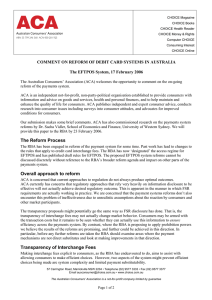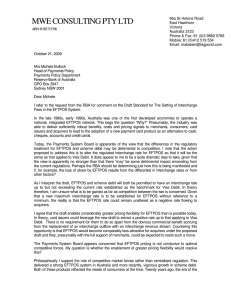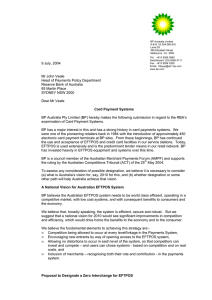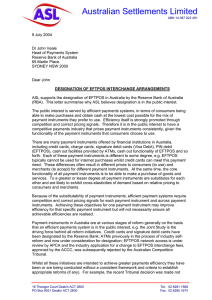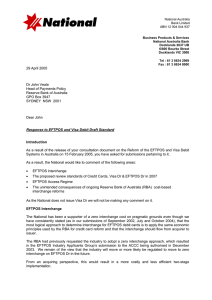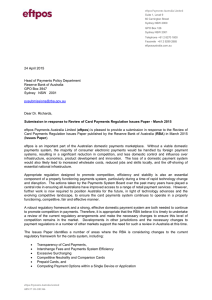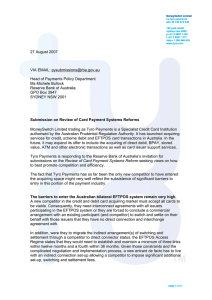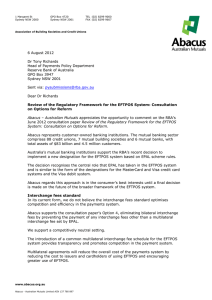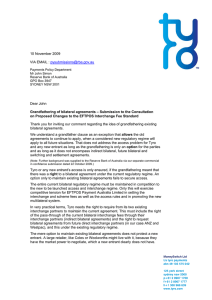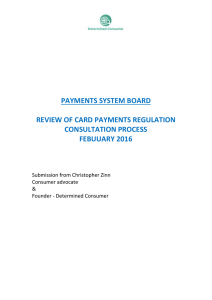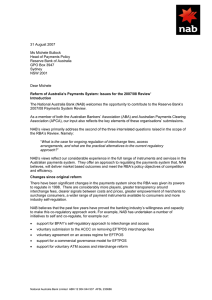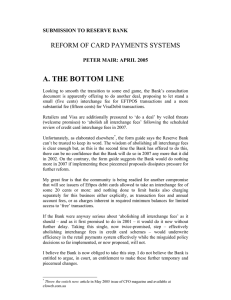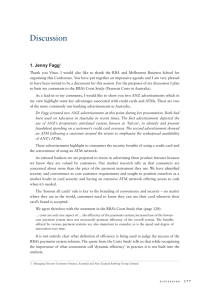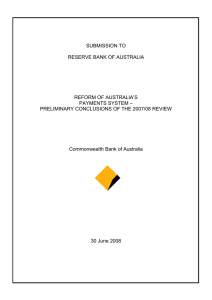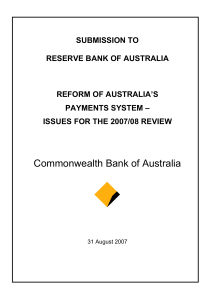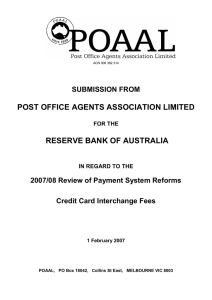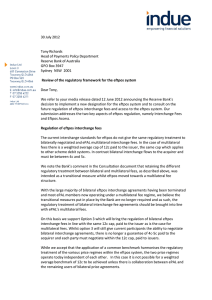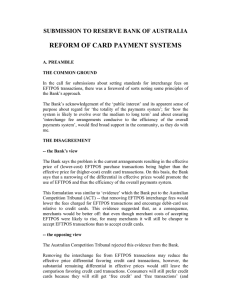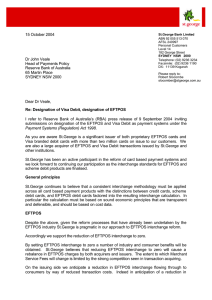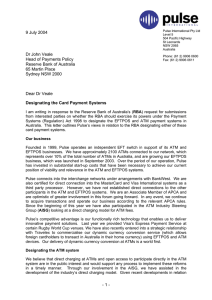Document 10818361
advertisement
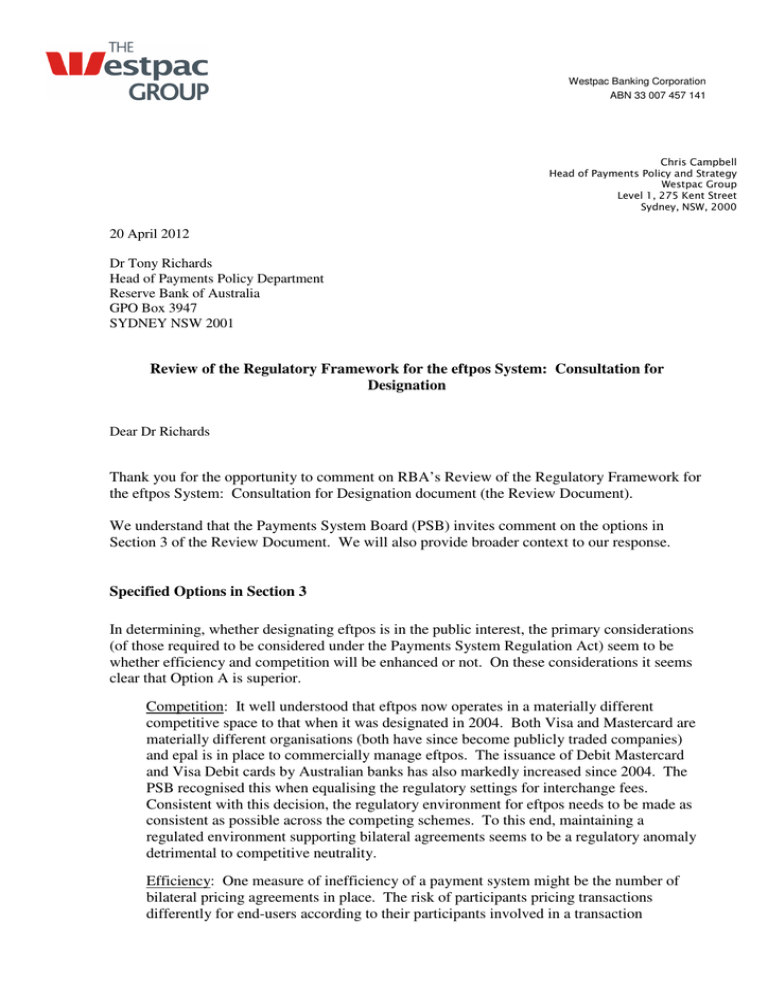
Westpac Banking Corporation ABN 33 007 457 141 Chris Campbell Head of Payments Policy and Strategy Westpac Group Level 1, 275 Kent Street Sydney, NSW, 2000 20 April 2012 Dr Tony Richards Head of Payments Policy Department Reserve Bank of Australia GPO Box 3947 SYDNEY NSW 2001 Review of the Regulatory Framework for the eftpos System: Consultation for Designation Dear Dr Richards Thank you for the opportunity to comment on RBA’s Review of the Regulatory Framework for the eftpos System: Consultation for Designation document (the Review Document). We understand that the Payments System Board (PSB) invites comment on the options in Section 3 of the Review Document. We will also provide broader context to our response. Specified Options in Section 3 In determining, whether designating eftpos is in the public interest, the primary considerations (of those required to be considered under the Payments System Regulation Act) seem to be whether efficiency and competition will be enhanced or not. On these considerations it seems clear that Option A is superior. Competition: It well understood that eftpos now operates in a materially different competitive space to that when it was designated in 2004. Both Visa and Mastercard are materially different organisations (both have since become publicly traded companies) and epal is in place to commercially manage eftpos. The issuance of Debit Mastercard and Visa Debit cards by Australian banks has also markedly increased since 2004. The PSB recognised this when equalising the regulatory settings for interchange fees. Consistent with this decision, the regulatory environment for eftpos needs to be made as consistent as possible across the competing schemes. To this end, maintaining a regulated environment supporting bilateral agreements seems to be a regulatory anomaly detrimental to competitive neutrality. Efficiency: One measure of inefficiency of a payment system might be the number of bilateral pricing agreements in place. The risk of participants pricing transactions differently for end-users according to their participants involved in a transaction ____________________________________________________________________________ (reflecting different interchange agreements) increases as the differentials between interchange fees increase. Given the difficulty for cardholders to discover which interchange agreement a particular transaction is subject to, if this risk were to eventuate, an efficiency cost would arise. Indeed if there is a variant on Option A, consideration could be given to regulatory action to remove bilateral interchange fees, particularly when they were in place prior to the introduction of a multilateral interchange fees. Other Issues In 2011 RBA issued two media releases referring to issues identified with the use of multifunction cards and how competing schemes’ rules relate to that usage. The topics referenced were data requirements and brand fees. Our understanding is that these topics and others arising from competition between schemes and the issuance of multifunction cards remain unresolved to the satisfaction of all parties. Further, more issues along these lines are likely to arise, in particular how NFC will work on multifunction cards. Finding a way of protecting this type of asset (eg multifunction cards and however the concept may change as technology develops), enabling future generation of unique Australian solutions (eg BPAY), while capturing the benefits of increased competition between payment systems seems to us to be a key challenge facing the industry. We look forward to further consultation with you on this matter. Yours Sincerely Chris Campbell Head of Payments Policy and Strategy Westpac Group Page 2 of 2
